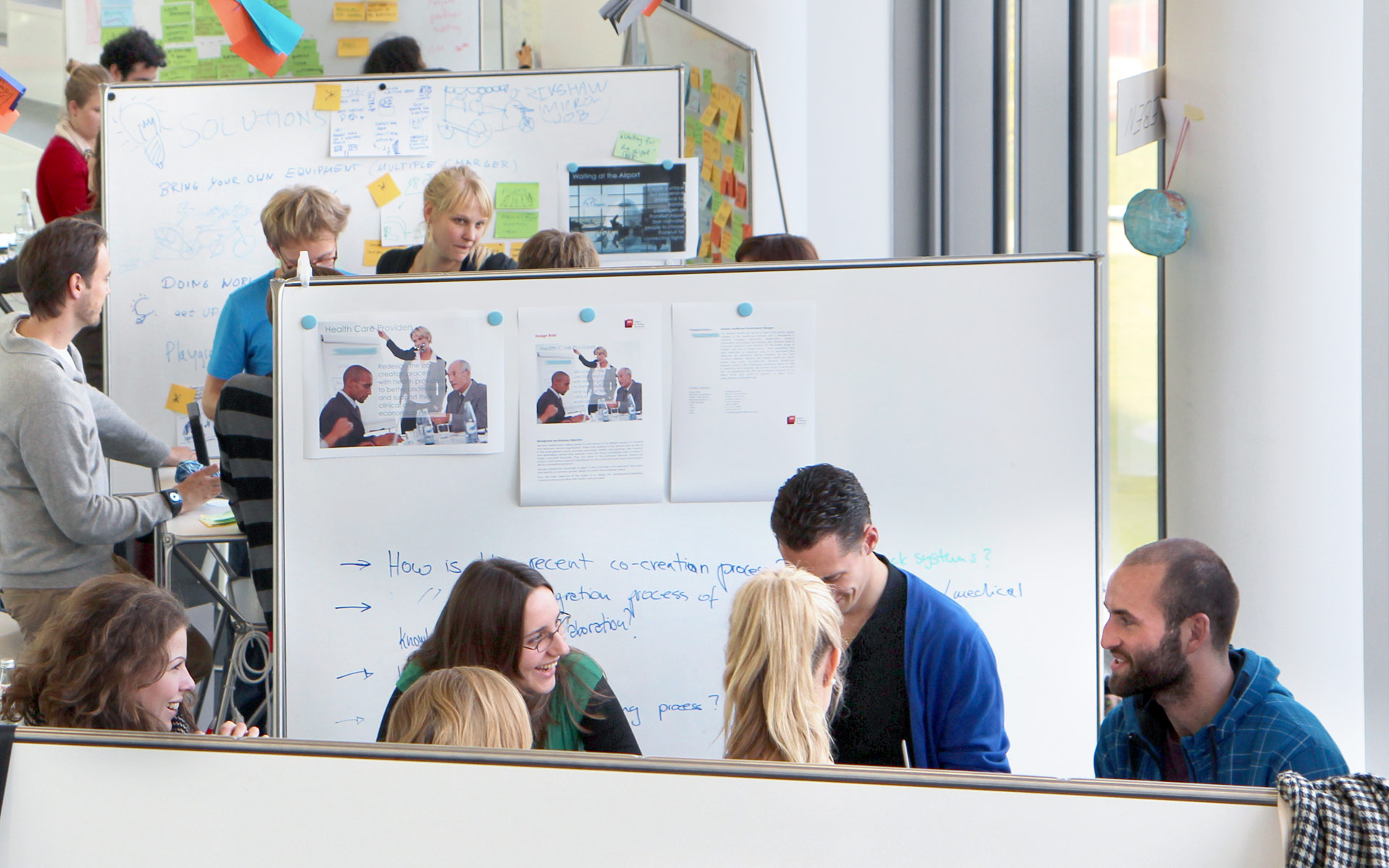Evaluation of supportive instrument usage for interdisciplinary team processes
Design thinking as an innovative process uses a broad variety of instruments. In addition to the predominant use of whiteboards, post-its and simple pens, digital documentation and communication applications are employed as well.
The degrees of efficiency of the instruments used in the process so far, differs not only in terms of the characteristics of the instruments themselves. In interdisciplinary team environments – which are essential to the design thinking approach – the way and efficiency of tool usage depends on the personal and professional background of the team members. Furthermore, instruments suit the specific phases of the process with varying degrees of success. Most of the time, a combination of instruments will be a reality. In addition to a profound research in this field, we plan to look at individual and unintended tool usages, which could serve as best practices for entire teams.
First Hypothesis: Process support of existing instruments can be optimized through orchestration according to teams and projects.
Additionally, it is our intent to investigate the potential of the different instruments for supporting extensive and substantial documentation. This is strongly desired by individuals, teams, project partners, other stakeholders and succeeding project teams. Nonetheless, this far it has been inadequately implemented. The goal is to understand why and how a suitable instrument setting can support better results.
Second Hypothesis: Documentation needs of all stakeholders can be satisfied without additional time-effort by optimizing documentation instruments.
Based on the results of the initial research and observations, the project will undertake an analysis of instrument-usage efficiency. Therefore we propose a measurement framework.
The research shall result in a deep understanding of the needs and practices of supportive instrument usage for interdisciplinary team processes. Our aim is to give recommendations regarding future instrument-usage settings and development for design thinking projects and for preliminary skill acquisitions.
Project Team:
Christoph Meinel, Bert Baumann, Andreas Groß, Christine Noweski, Christian Willems
Watch the video on Tele-Task

